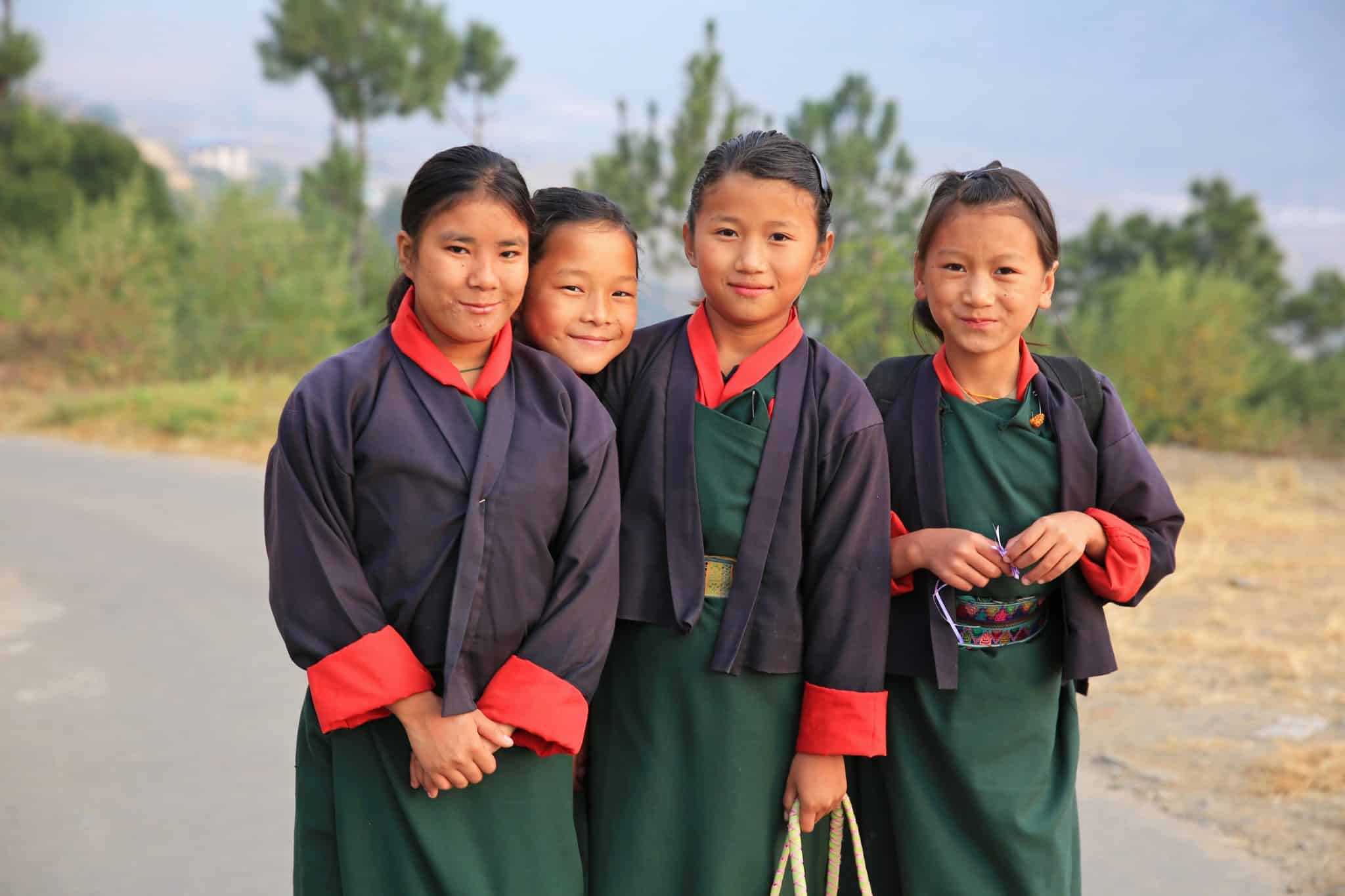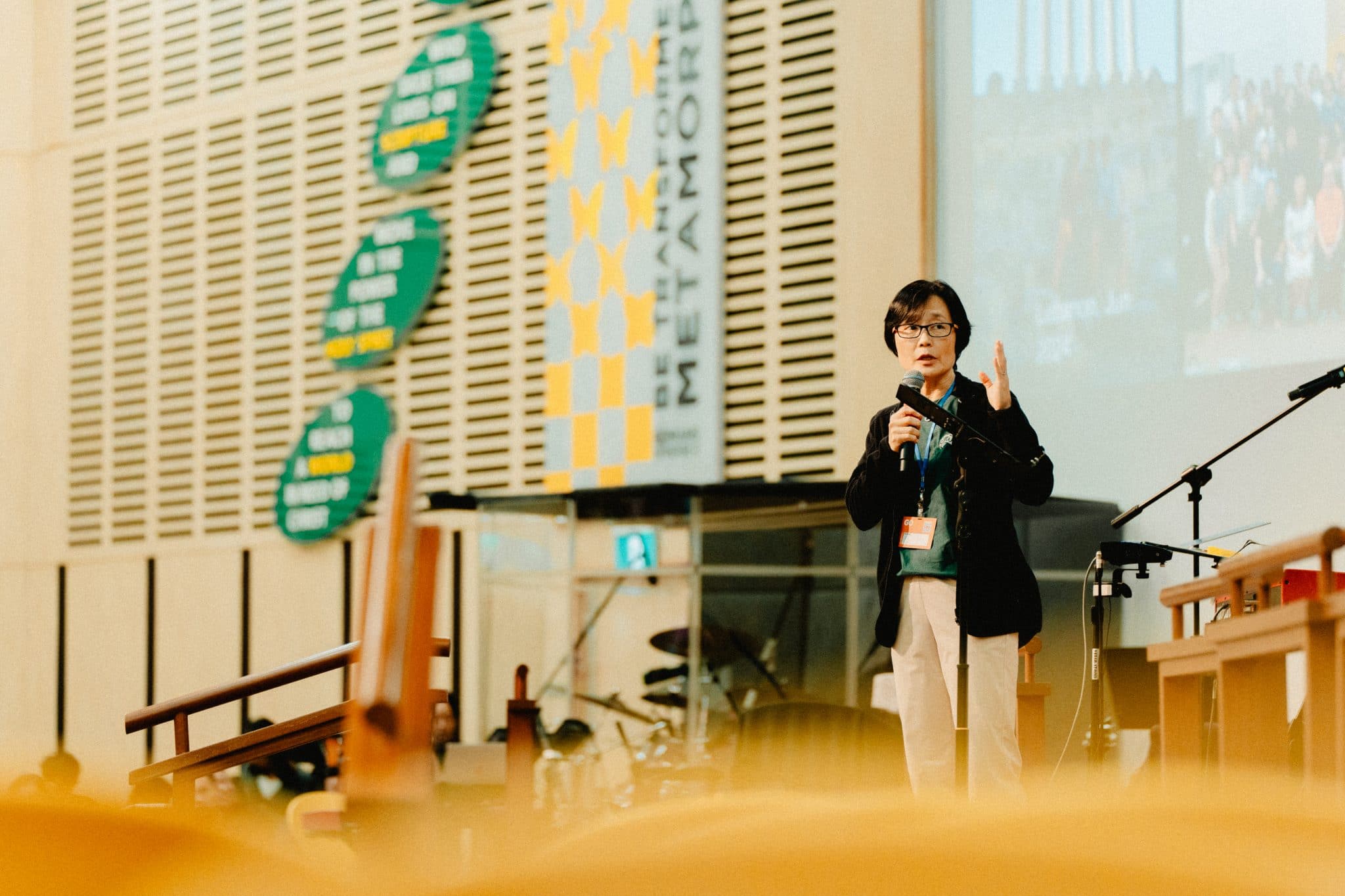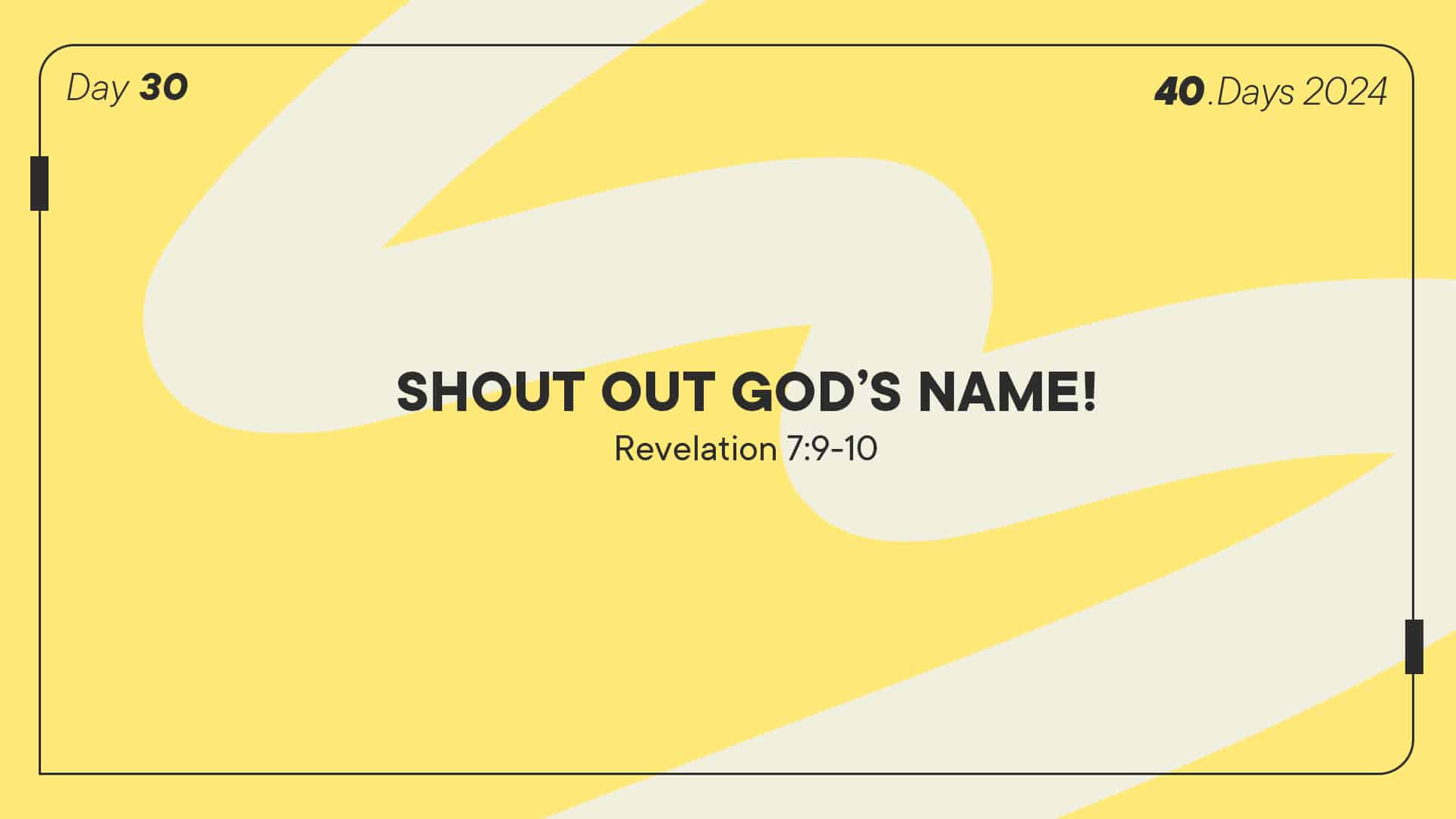New online tool to help churches engage in missions more effectively launched at Antioch Summit 2024
by Gracia Lee // October 18, 2024, 4:22 pm
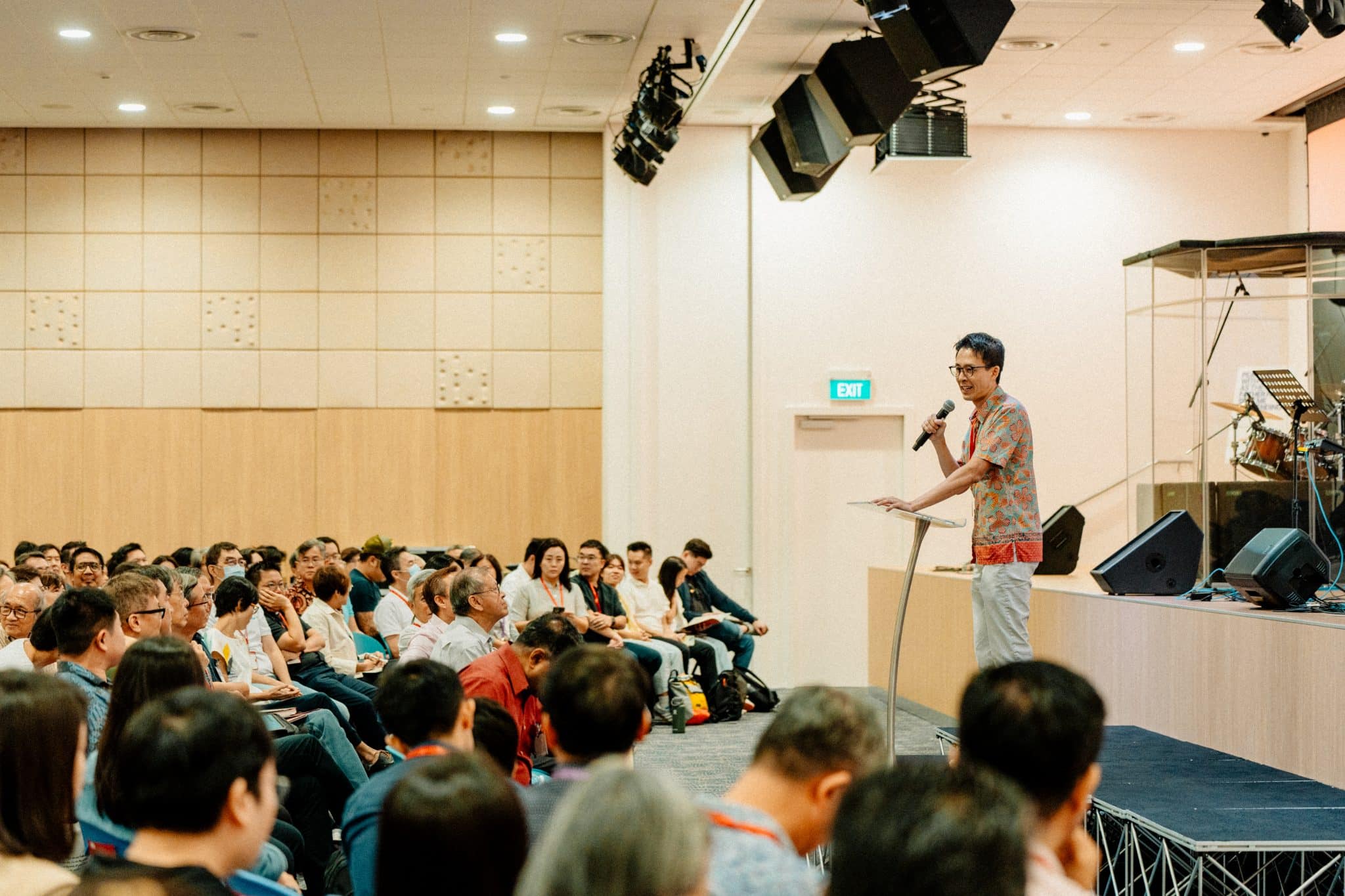
“We cannot serve the Great Commission without sending missionaries, and we cannot send missionaries without missions-sending churches,” said Pastor Ng Zhi-Wen at the Antioch Summit. Photo by Ang Wei Ming.
Churches now can use a new online tool to assess how prepared they are for missions, and receive suggestions on how to be more effective participants in local and global missions.
The Church Missions Readiness Assessment (CMRA), which was launched at the Leader’s Track (October 3) of the Antioch Summit this year, comprises 25 multiple choice questions (MCQ) that help missions leaders identify their church’s strengths and weaknesses in the area of missions.
Also provided is a roadmap with practical steps to help churches improve and strengthen their readiness to be a missions-sending church.
The Decade of Missions
The online questionnaire was created to help mobilise 80% of evangelical churches to engage in missions, which is one of the three faith goals of Antioch21’s Decade of Missions.
“We cannot serve the Great Commission without sending missionaries, and we cannot send missionaries without missions-sending churches,” said Pastor Ng Zhi-Wen, who took over as Antioch21’s strategic coordinator after his predecessor Joseph Chean’s passing last November.
At last year’s Antioch Summit, Joseph had launched the Decade of Missions (2023-2033), a vision for churches in Singapore to be involved in global missions over the next 10 years.
He had listed three faith goals to be achieved by 2033, which will mark about 2,000 years since the Resurrection and Pentecost:
- To mobilise 80% of local churches to engage in missions
- To place 1,000 Singaporean missionaries and 300 migrant missionaries in the nations for at least two years
- To plant 500 new churches that will multiply
- To adopt and actively engage 50 unreached people groups
- To pioneer 100 holistic mission initiatives (including medical, education, business and community development)
- To raise $10 million for missions work (including seed funding smaller churches to deploy missionaries and to provide post-field support for returning missionaries)
Noting that there are global movements targeting 2033 as the year to reach every person on earth with the gospel, Joseph had said at last year’s summit: “Singapore, as an Antioch of Asia, must participate in this global endeavour, to contribute our part to fulfil Christ’s mandate to the global Church.”
Not a competition
Explaining the CMRA tool at this year’s summit, Pastor Yeoh Seng Eng from the core team of Antioch21 said that the online assessment, which takes between 15 to 20 minutes to complete, assesses four key pillars of being a missions-sending church, namely: discipleship, sending, support and structure.
The four key pillars are further broken down into 10 sub-components (see picture below), which Pastor Seng Eng, a missions pastor at Pasir Panjang Hill Brethren Church, said are relevant to churches of various sizes, denominations and traditions.
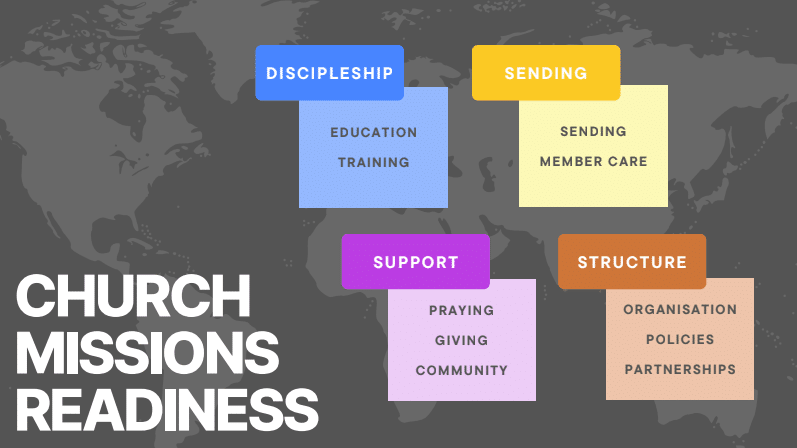
The 10 aspects of being a missions-sending church.
The 25 multiple choice questions in the assessment aim to give a snapshot of how a church is doing in each of these sub-components.
For example, questions include how often missions is preached at the pulpit, how much the church prays for and gives to missions, whether the church leadership provides mentorship and training to those interested in missions, and whether the church has a missions policy.
“It’s a journey you plot not with reference to anyone, but with reference to yourself.”
Based on the options chosen, the results will then score each sub-component out of 100, as well as provide an overall total score.
Those interested can also write in to Antioch21 ([email protected]) to request for the CMRA Appendix, which charts five stages of each sub-component and provides practical ways a church can move up to the next stage in areas that need improvement.
Stressing that the assessment is not meant to be a competition or a tool for comparison, Pastor Seng Eng said: “It’s a journey you plot not with reference to anyone, but with reference to yourself.”
If we all play our part
To further equip churches to become effective missions-senders, Antioch21 will also be running a Learning Journey programme over six Saturdays next year.
The monthly programme, which costs $180 per person, is targeted to mission leaders, pastors and committee members, and includes in-person sessions, mentoring with other missions personnel, practical assignments, as well as a partnership or vision trip.
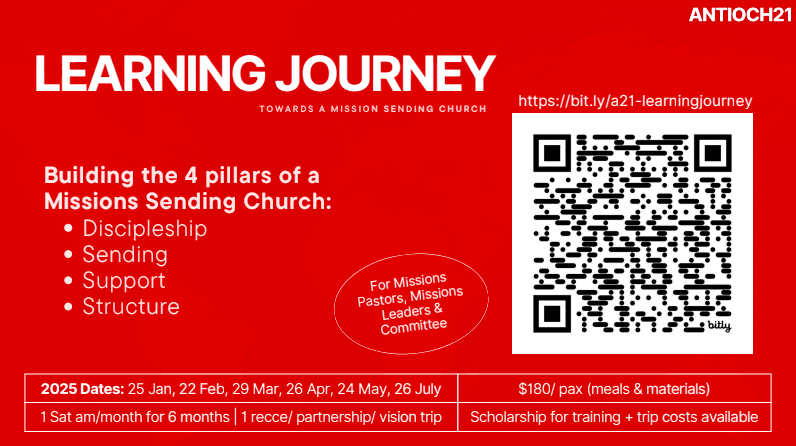
The Learning Journey will be held once a month over six Saturdays next year.
Encouraging churches to take missions seriously, Pastor Zhi-Wen said at the summit: “Every local church is, I would say, obliged to seriously consider how it participates in our Father’s global mission, the Great Commission.
“Imagine with me if every church in Singapore was to raise and send even just one long-term missions worker within this Decade of Missions – just one – we will be well on our way.”
To participate in the Church Missions Readiness Assessment (CMRA), tap here.
To sign up for the Antioch21 Learning Journey, tap here or email Antioch21 for more details.
RELATED STORIES:
“Make God’s greatest concern our greatest concern”: Missions movement Antioch21 relaunched
The Decade of Missions has been launched, here’s your role to play
We are an independent, non-profit organisation that relies on the generosity of our readers, such as yourself, to continue serving the kingdom. Every dollar donated goes directly back into our editorial coverage.
Would you consider partnering with us in our kingdom work by supporting us financially, either as a one-off donation, or a recurring pledge?
Support Salt&Light